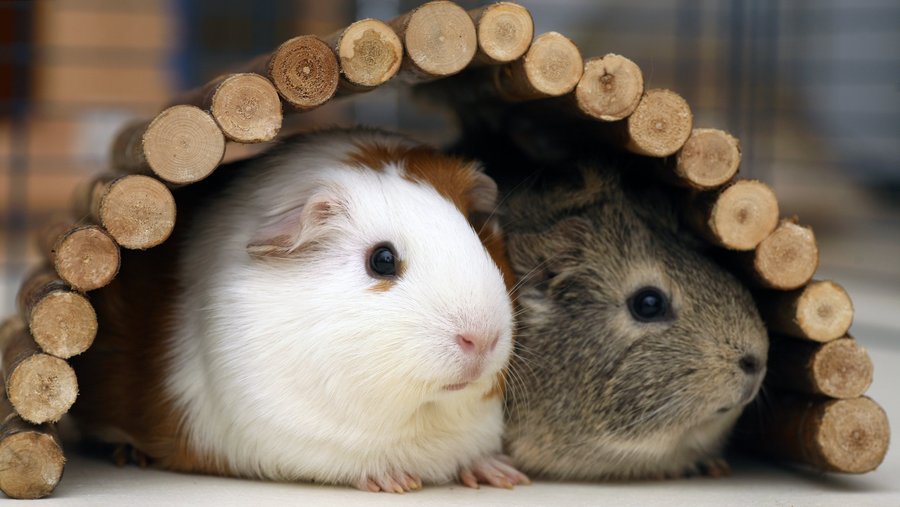No matter whether you are a gifted hobbyist or rather have two left hands, there are enough possibilities to create different hiding places. You can find many of them ready-made in your household. If you keep several animals, each of them should have at least one sleeping house. But also solitary animals, such as hamsters, appreciate several hiding places.
Tip 1: Ready-made hiding places
Pieces of cork oak or perforated bricks with sufficiently large cavities are a perfect shelter and can be easily set up. Cardboard boxes are also wonderful. Simply cut out two openings - and from the mouse to the giant rabbit, you'll have a suitable den in no time. Make sure to use unprinted material that is free of staples or similar hazards. The beauty of cardboard boxes: Rodents can also help design them and create their own entrances and exits.
Tip 2: Build a maze out of cardboard
Especially mice and dwarf hamsters love mazes. This is because in nature they dig tunnels in the ground. You can easily imitate them. Empty cardboard rolls are wonderfully suitable for this. You can bury the rolls in the litter. Or you can stick them together and create three-dimensional works of art. Use "flour paste" made from water and flour or methyl cellulose glue (a special wallpaper paste). This way you can be sure that your darlings won't absorb any harmful substances. Keep adding "peepholes" so you can keep track of where your rodents are stuck. These labyrinths can be built into the cage or used as a course for playtime outside the cage.
Tip 3: Rodent walkways of your own design
Especially small rodents like to scurry through moss or wood wool and create their own small passages. Also shreds from the paper shredder are suitable. Please do not take the moss from nature - all mosses are protected. Alternatively, you can create a thick layer of litter with layers of hay in between. Small rodents can dig tunnels in the litter, which are supported by the hay. In autumn you can collect leaves, dry them and apply a thick layer of them to the litter. For example, beech and hazel leaves are suitable. Guinea pigs and rabbits love to dig through mountains of straw. You can get non-chopped straw best from the farmer or you ask in a riding stable.
Tip 4: Rodent houses and burrows made of wood
You want something for the eye? Then make a house out of natural wood. Here you have to pay attention to two things: clean material and clean processing. Clean material means that you use only untreated wood. Poplar, for example, is a good choice. You can buy it inexpensively in hardware stores from a thickness of six millimeters. Clean processing means that you sand all edges carefully. And, of course, make sure that no nails or wires are sticking out. In your self-built cottage, do not add a floor at the bottom and attach the roof with a hinge. This way you can easily clean the sleeping place and check if your pet is doing well. You want to treat your rodent to something special? Then build him a house with several chambers. A pantry, a sleeping chamber and one for big and small business. Especially chic are also shelters in the "log cabin style".
You can find instructions for a great DIY rodent bridge here.

